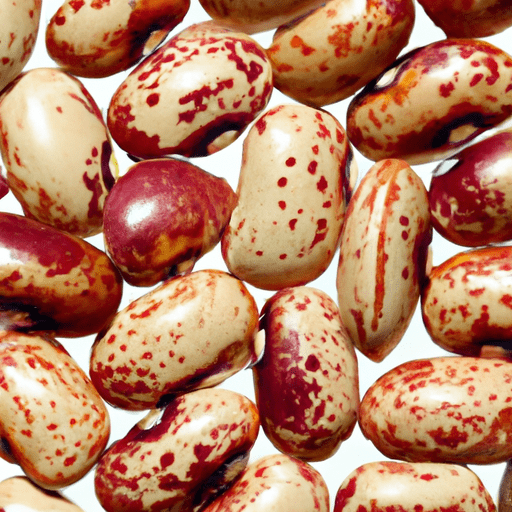Rediscovering the Deliciousness of Dried Roman Beans
If you are on a quest to explore new varieties of legumes that boast exceptional flavor and versatility, then look no further than the delightful dried Roman beans. Known for centuries as a staple in Mediterranean cuisine, these legumes have recently gained popularity beyond their original borders. With their distinct taste, multiple culinary uses, and remarkable nutritional value, it’s no wonder that dried Roman beans are making a comeback in kitchens around the world.
Taste and Texture
Dried Roman beans are beloved for their rich, nutty flavor and smooth, creamy texture. When cooked to perfection, these beans yield a hearty, melt-in-your-mouth bite with a subtle earthy undertone. They have a dense and meaty consistency that holds up well in various dishes, making them an ideal ingredient for satisfying soups, stews, and salads.
Culinary Applications
Versatility is the name of the game when it comes to dried Roman beans. Their robust flavor complements an array of ingredients, making them a delightful addition to both vegetarian and meat-based dishes. These culinary gems can be used in various preparations, including:
Soups and stews: Dried Roman beans shine as the star ingredient in comforting, hearty soups and stews. Their ability to absorb flavors from aromatic herbs, vegetables, and savory broths elevates these dishes to new heights of deliciousness.
Salads: When cooked until tender and then chilled, dried Roman beans provide a satisfying and protein-rich addition to salads. Toss them with colorful veggies, fresh herbs, and a zesty dressing for a refreshing and wholesome meal.
Spreads and dips: With a little creativity, you can transform cooked Roman beans into creamy and flavorsome spreads and dips. Simply blend them with garlic, lemon juice, olive oil, and your favorite seasonings for a tasty accompaniment to crusty bread or crunchy veggie sticks.
Nutritional Powerhouses
Beyond their delectable taste and culinary versatility, dried Roman beans boast an impressive nutritional profile. Packed with essential nutrients, they offer numerous health benefits. Here’s a glimpse into the goodness locked within each bean:
Protein: Dried Roman beans are an excellent plant-based protein source, making them a valuable addition to vegetarian and vegan diets.
High Fiber Content: These legumes are loaded with dietary fiber, known for promoting digestive health, regulating blood sugar levels, and contributing to a feeling of fullness.
Vitamins and Minerals: Dried Roman beans contain valuable vitamins and minerals, including folate, iron, magnesium, and potassium.
A Walk Through History
Dried Roman beans, as their name implies, have profound historical ties. Originating in ancient Rome, they were a fundamental part of the Roman diet, appreciated for their taste and nourishing qualities. Roman beans, often referred to as “Phaseolus vulgaris,” were cultivated extensively throughout the empire and quickly spread across Europe and beyond.
Today, these legumes continue to be cherished in Mediterranean dishes while captivating taste buds worldwide. Their enduring presence in culinary traditions serves as a testament to their culinary merit and timeless appeal.
Dried Roman beans offer a captivating culinary journey, merging exceptional taste, versatility, and nutrition in one humble package. Whether simmered in a comforting soup or blended into a luscious dip, these legumes bring an exquisite touch to your table. As you savor their rich flavors, take a moment to connect with ancient cultures that embraced these captivating beans. Rediscover the marvels of dried Roman beans and let them elevate your culinary exploits to new heights!
Dried Roman Beans
Origin: The Roman bean, or Phaseolus vulgaris, is believed to have originated in Central America and was later brought to Europe by Spanish explorers during the 16th century. It is named after the Romans who reportedly cultivated and popularized these beans.
Common Uses: Dried Roman beans are commonly used in various dishes, including soups, stews, casseroles, and salads. They have a creamy texture, mild flavor, and the ability to absorb surrounding flavors, making them versatile for use in different cuisines.
Nutritional Benefits: Dried Roman beans are a nutritious ingredient. They are an excellent source of plant-based protein, containing about 15 grams of protein per cooked cup (177 grams). Additionally, they are rich in dietary fiber, offering around 12 grams per cooked cup, which promotes digestive health. These beans also provide several essential minerals such as iron, magnesium, and potassium.
Unique Properties: Roman beans have the property of thickening soups and stews due to their starch content. This makes them ideal for creating hearty and satisfying dishes. They have a relatively long cooking time compared to other beans, requiring soaking overnight and a simmering time of 1-2 hours to become tender.
Historical Significance: The Roman bean has a historical significance as it was one of the staple foods in Ancient Rome. In fact, it is mentioned in some of the surviving recipes from the Roman Empire. These beans were highly valued not only for their taste but also for their versatility and ability to sustain people for extended periods of time.
Note: If you are specifically referring to the variety of beans known as “Roman beans,” which are white and slightly flattened, please let me know, and I can provide information on those as well.




Use the share button below if you liked it.
It makes me smile, when I see it.